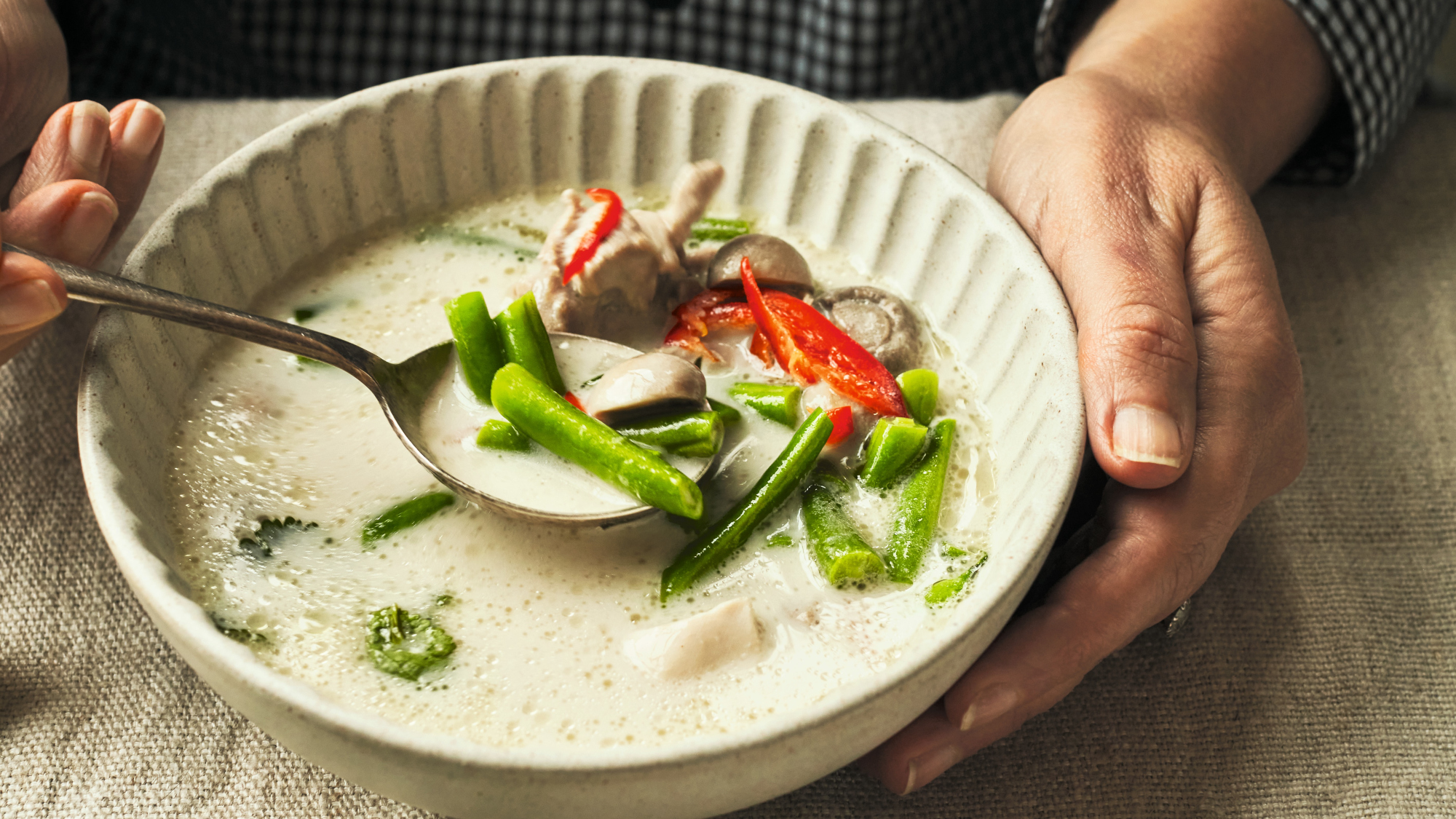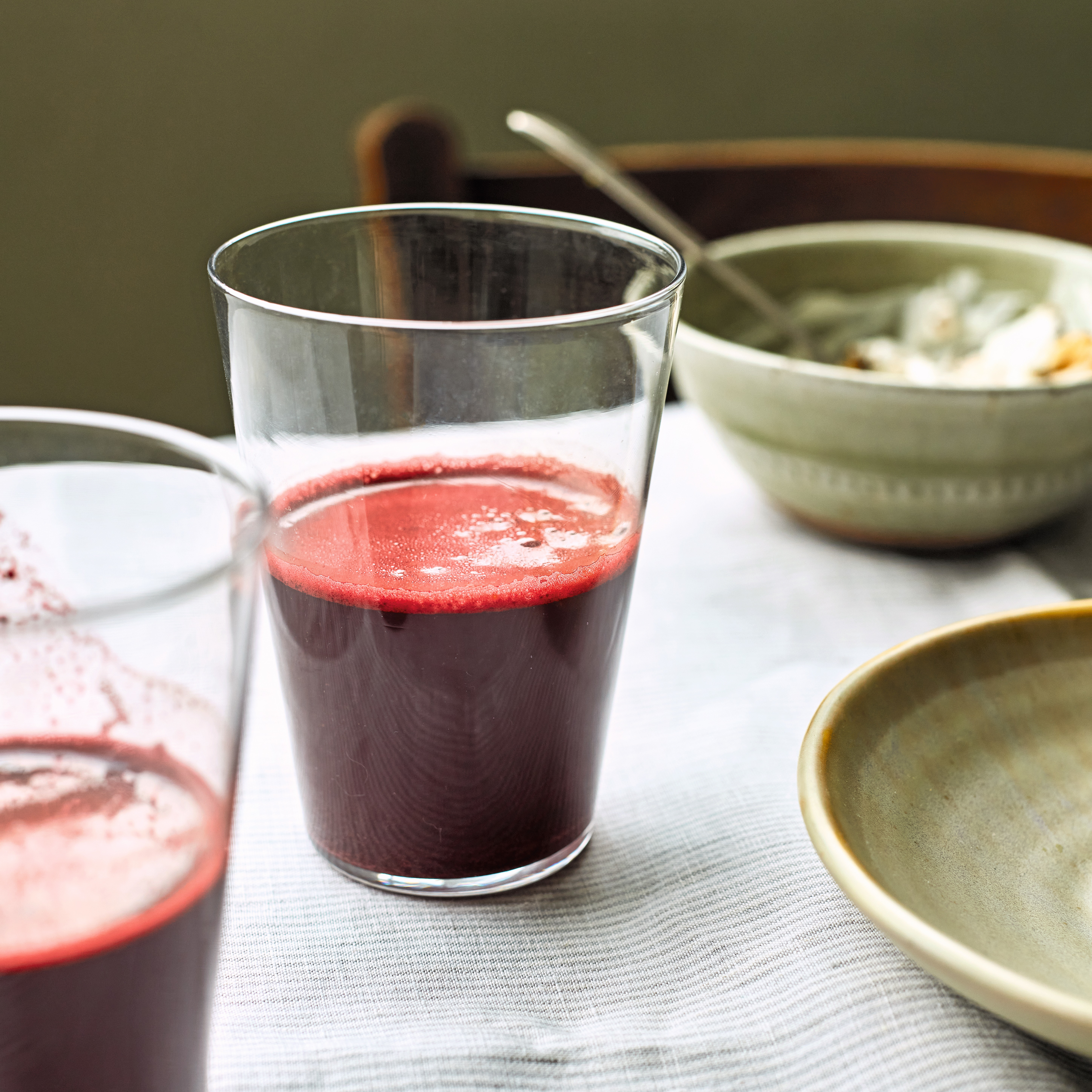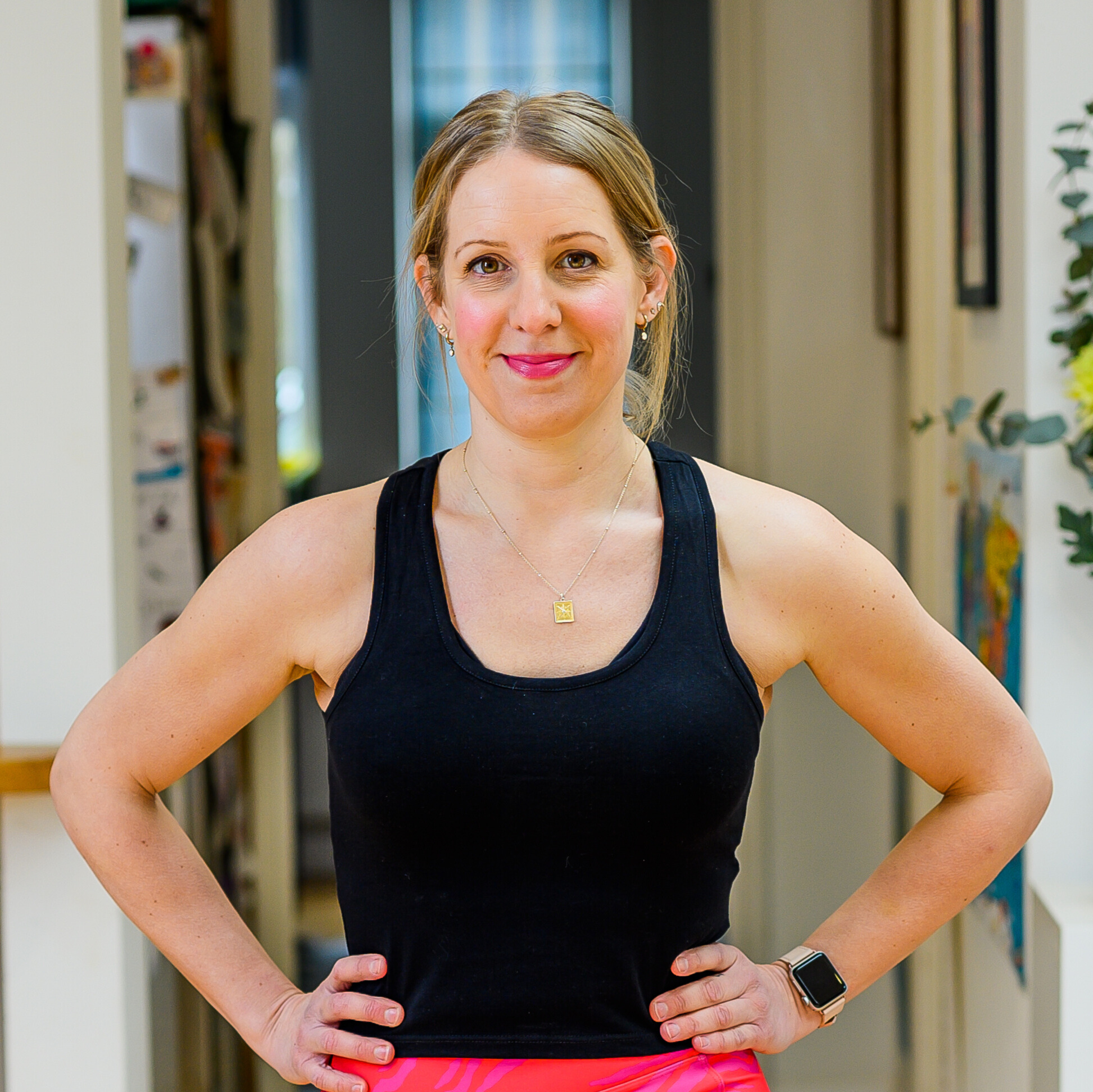This is what a menopause nutritionist recommends midlife women eat to ease symptoms—try these three recipes today
Plus, the four food types midlife women should eat more of

| Makes |

Dealing with the physical and mental changes of menopause can feel like an uphill battle, but small wins can make all the difference. I’ve found that eating well has helped me manage some of my perimenopausal symptoms, and I always feel better when I have time to cook from scratch.
I spoke to menopause nutritionist Karen Newby, author of The Natural Menopause Method Cookbook, to see what she recommends for women in this transitional period.
“Often my advice is actually to eat more—especially at breakfast and lunch. This helps to fuel our brain and body when we need the energy—in the daytime—not at the end of the day when it’s more likely to be laid down as fat.
“So many of us don’t eat breakfast, which can mean that we are hanging off our hormones or caffeine all morning—this is when irritability can get worse!
“More protein-rich foods with every meal and snack are also important, as is fiber. Something like 90% of us don’t get enough.”
In her new book, The Natural Menopause Method, Newby has created recipes that she says can help ease some of the most common issues her clients are dealing with.
“The eight symptoms I have created recipes for are aches and pains, brain fog, exhaustion, hot flushes, irritability, overwhelm/anxiety, sleep deprivation and menopausal weight gain,” says Newby.
Start your week with achievable workout ideas, health tips and wellbeing advice in your inbox.
Scroll down to try three of Newby’s recipes, as well as hear the top four food types she says every midlife woman should be eating more of.
Beef pho recipe
A post shared by Karen Newby (@karen.newby.nutritionist)
A photo posted by on
“This is a dish designed for our joints due to the collagenous broth and the analgesics (natural painkiller properties) from the aromatics (cloves, fennel and star anise),” says Newby. “The broth also contains the amino acid glycine, which is important for cartilage, ligaments and tendons.”
Prep time: 15min Cook time: 40min
Ingredients
- 4 star anise
- ¼tsp whole cloves
- 1½tsp coriander seeds
- ¼tsp black peppercorns
- 2 cinnamon sticks
- 1 banana shallot, halved lengthways
- 35g (1¼oz) peeled fresh ginger, 25g (1oz) sliced lengthways and the remainder finely grated
- 2 garlic cloves, roughly crushed with the flat side of a knife
- 2 celery sticks, roughly chopped
- ½ fennel bulb, roughly chopped
- 1 carrot, peeled and roughly chopped
- 1.5 litres (2¾ pints) home-made or good-quality shop-bought beef (or chicken) broth/stock, hot
- 2tbsp fish sauce (nam pla)
- 3tbsp tamari
- 90ml (3floz) lime juice, approximately 3-4 limes
- 400-500g (14oz-1lb 2oz) beef steak (rump or fillet), cut into ½cm (¼in)-thick slices
- 400g (14oz) dried rice noodles
- 1tbsp olive oil
- 1 lime, quartered into wedges, to serve
- Hoisin or chilli sauce or sriracha
Garnishes (any or all of the following)
- 50g (1¾oz) beansprouts
- 4 radishes, thinly sliced
- 15g (½oz) fresh Thai (or regular basil leaves)
- 10g mint leaves
Method
- Add the spices, shallot and sliced ginger to a large saucepan and dry-fry over a medium heat for two minutes, until lightly toasted and smelling fragrant.
- Add the garlic, celery, fennel and carrot and continue to dry-fry for another two to three minutes.
- Add the hot broth/stock and bring to a gentle simmer.
- Add the fish sauce and 2 tablespoons of the tamari, cover and cook slowly for about 40 minutes.
- Meanwhile, mix the remaining tablespoon of tamari with 2 tablespoons of the lime juice and the grated ginger. Pour this over the beef slices in a dish, stir to coat, then set aside to marinate until needed.
- Cook the noodles according to the packet instructions and then cool under cold running water to stop them from cooking further or sticking. Divide between four bowls.
- Add the olive oil to a frying pan and, once hot, add the marinated steak slices. Fry over a medium-high heat for 2-3 minutes, turning so that both sides are seared.
- Place the steak slices on top of the noodles, to rest and wait for the broth to finish cooking.
- Just before serving, add the remaining lime juice to the broth and then, pouring through a sieve (to catch the aromatics), ladle it into the bowls.
- Serve with whatever garnishes you like, along with a wedge of lime and some hoisin or chilli sauce or sriracha to dip the beef into.
My verdict: This dish has a fair few ingredients so while it’s a modified version of a traditional pho—you only cook the broth for 40 minutes instead of hours—it may feel a little complicated for amateur cooks. I couldn’t find banana shallots in my local grocery store so I substituted with half a white onion. I like my pho a little spicy so I added some dried chilli flakes to the broth as well as some fresh mint at the end and a generous squeeze of sriracha sauce to give it a real kick.
Thai coconut chicken soup recipe
“Low in carbohydrates and high in protein to support a drip-feed of energy to minimize snacking, this delicious, healthy soup can be eaten on its own or with the addition of courgetti (strips of zucchini) or some cooked prawns,” says Newby. “The chicken is also a great source of B vitamins for energy, and coconut milk provides caprylic acid, known for its anti-microbial effect in the gut.”
Serves: 4 Prep time: 15min Cook time: 40min
Ingredients
- 1½tbsp coconut oil
- 25g (1oz) peeled fresh ginger, cut lengthways into ½cm (¼in)-thick slices
- 2 lemon grass stalks, lightly bruised and cut into 5cm (2in)-long pieces
- 10 makrut lime leaves, rolled up and thinly sliced
- 20g (¾oz) fresh coriander, stems chopped into 2cm (¾in) pieces, leaves roughly chopped
- 2 banana shallots, roughly chopped
- 800ml (28fl oz) chicken stock
- 400ml (14fl oz) can coconut milk
- 400g (14oz) skinless, boneless chicken thighs, cut into 2-3cm (¾-1¼in) pieces
- 100g (3½oz) white button mushrooms, sliced ½cm (¼in) thick (or halved)
- 100g (3½oz) beansprouts, French beans cut into thirds or mangetout (depending on the season)
- 2tbsp lime juice
- 2tbsp fish sauce (nam pla)
- 1 red chilli, thinly sliced (optional)
- 1 lime, quartered into wedges, to serve
Method
- Add the coconut oil to a large saucepan and place over a medium heat.
- Once melted, add the ginger, lemongrass, lime leaves, coriander stems and shallots and cook for about three minutes, stirring from time to time.
- Pour over the stock, bring to the boil, then reduce to a simmer, cover and cook for 10 minutes.
- Next, strain the stock through a colander into a heatproof bowl (do not throw away the liquid!), pressing the aromatics to extract as much flavour as possible.
- Return the liquid to the saucepan (the aromatics can now be discarded) and add the coconut milk, chicken pieces and mushrooms.
- Bring to a simmer, then cover and cook for 15 minutes, until the chicken is cooked through.
- Add the beansprouts, French beans or mangetout, cook for a final 3-4 minutes and then stir through the lime juice and fish sauce.
- Serve as is, or on top of cooked noodles, courgetti (strips of zucchini) or rice, with the red chilli (if using) and coriander leaves sprinkled on top, plus a wedge of lime alongside for everyone to squeeze over their own bowl.
My verdict: This is a fairly easy recipe to make and it tastes really good, too. I like to brown the meat a bit for extra flavour rather than poach it, so I fried the chicken thighs at the same time as the ginger. If you don’t like meat on the bone you could substitute the thighs for chicken breast. As with the pho, I used white onion in place of banana shallots.
Iron lady smoothie recipe

“Kale, beetroot, parsley and spinach are some of the best sources of iron and are also high in vitamin C to help its absorption,” says Newby. “They are also great sources of magnesium. Beetroot contains nitrates, which convert to nitric acid in the body, and this helps with circulation.”
Serves: 2 Prep time: 10min
Ingredients
- 2 raw beets, washed, trimmed and roughly chopped
- 6 carrots, roughly chopped
- 3 kale leaves
- 20g/¾oz fresh ginger (no need to peel)
- 25g/1oz fresh parsley
- 80g/3oz baby (or regular) spinach
- 140g/5oz cucumber, roughly chopped
Method
- Put all the ingredients into your juicer or blender and juice.
- Pour into two glasses and serve.
My verdict: This is a really fresh and hearty smoothie that feels as healthy as it tastes. Beware—the beets can stain so be careful when pouring it out into a glass, and try your best not to spill any on yourself or it will look like a massacre! I liked how easy it was to make, and it was still good with regular instead of baby spinach, and I couldn’t find parsley in the supermarket so I omitted that, too.
These recipes are taken from The Natural Menopause Method Cookbook by Karen Newby (Pavilion Books), out now.
The four food types midlife women should eat more of
Newby says if midlife women do nothing else, they should prioritize these four food types to help ease menopause symptoms.
- “Make friends with tofu for the phytoestrogens, which have a mild estrogen-like effect on the body (the hormone that fluctuates during menopause),” says Newby. “And if you don’t like tofu, then try tempeh, miso, edamame beans, organic soya yogurt or ground flaxseed and pulses like chickpeas, peppers and cruciferous vegetables including broccoli, cabbage, kale, Brussels sprouts, and cauliflower. Phytoestrogens can really help with hot flushes which occur far less in North Asian countries like Japan and China who eat a lot of soy and other plant sources of phytoestrogens.
- “Eating more salmon is a great source of protein and for B6 to support progesterone synthesis and for omega 3 for its anti-inflammatory properties. Other omega 3 sources include sardines, mackerel, herring and vegan sources like linseed oil. Omega 3 can really help with morning stiffness as well as low mood.
- “Nuts, especially walnuts for minerals, omega 3 fats and antioxidants like flavonoids to help with brain fog and cognitive health.
- “Green leafy vegetables are good for iron, magnesium, vitamin C and calcium. And they are also a great source of fiber, which supports a healthy gut. Green leafy vegetables provide minerals to help us feel less exhausted.”
Maddy Biddulph is a journalist specializing in fitness, health and wellbeing content, with 26 years in consumer media working as a writer and editor for some of the bestselling newspapers, magazines and websites in the US and UK, including Marie Claire, The Sunday Times and Women’s Health UK.
She is a CIMPSA-certified PT and works one-on-one with clients, as well as running Circuits Club classes which mixes cardio and strength training and chair-based exercise classes for seniors.
You must confirm your public display name before commenting
Please logout and then login again, you will then be prompted to enter your display name.
